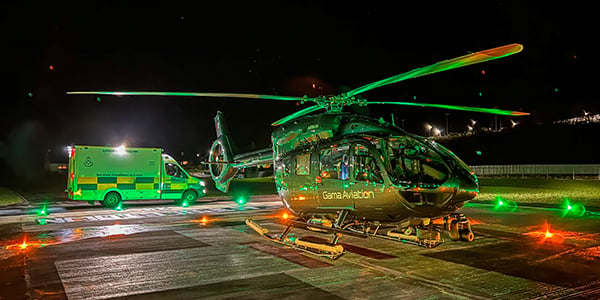
Five considerations for the transportation of bariatric patients by air ambulance
As of the most recent data available in 2021, the obesity rate in the UK is approximately 28%, with an additional 36% of adults being overweight. This means that a total of 64% of the UK adult population is either overweight or obese. The causes of this trend are complex and multifactorial, including factors such as changes in dietary habits, decreased physical activity, and increased sedentary behavior. Obesity is a major public health concern in the UK, as it is associated with a range of health problems, including heart disease, diabetes, and certain types of cancer.
Unfortunately the trajectory of a rising obesity rates in the UK is leading to a greater number of bariatric patients (those who are severely overweight or obese). As a patient type requiring special considerations when being transported by air ambulance (airway management being one), these patients face unique challenges due to their size and weight, and the medical team must take several factors into account to ensure their safe and comfortable transport.
Five considerations for the transport of bariatric patients via air ambulance are:
Equipment
One of the most important considerations when transporting a bariatric patient is the equipment used to move and support them during transport. This includes specialized stretchers, lifting equipment, and other tools designed to safely lift and manoeuvre patients who weigh more than the average person. Equipment from Bucher, Aerolite and HeliMods Powered Aero Loader provide systems for loading and unloading of patients.
Crew training
In addition to specialized equipment, air ambulance crews must be trained to handle bariatric patients. This includes knowledge of the unique challenges these patients face, such as difficulty breathing, increased risk of pressure sores, and limited mobility. Crew members must be able to properly assess the patient’s needs, administer any necessary medications or treatments, and provide emotional support to help ease the patient’s anxiety or discomfort.
Aircraft configuration
The size and weight of bariatric patients can also affect the configuration of the air ambulance aircraft. Some aircraft may need to be modified to accommodate larger patients, such as widening the entrance and exit doors or adding additional seats or stretchers. The configuration of the aircraft must be carefully considered to ensure the patient’s safety and comfort during transport. Recent design studies undertaken by our Part 21 J have shown the Airbus H145 to be capable of handling a 88cm width patient.
Ground support
Bariatric patients may require additional ground support, such as extra personnel or equipment, to help them get to and from the aircraft. Air ambulance companies must ensure that the ground crew is properly trained and equipped to handle bariatric patients, as well as any obstacles that may arise during transport.
Communication
Effective communication between the medical team, the patient, and the patient’s family is crucial for a successful transport. Bariatric patients may have unique medical needs or concerns that require careful consideration, and it is important to ensure that everyone involved in the transport is on the same page. Air ambulance companies should have clear communication protocols in place to ensure that everyone involved is kept informed and up to date.
In conclusion, transporting bariatric patients by air ambulance requires careful planning and specialised equipment, as well as a well-trained and experienced medical team. By taking these considerations into account, air ambulance companies can ensure the safe and comfortable transport of bariatric patients, while also providing the necessary medical care and emotional support to help ease the patient’s anxiety or discomfort.
